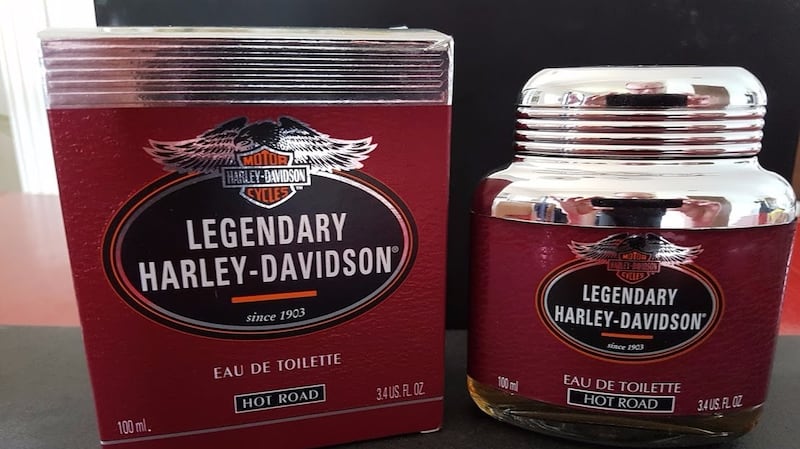The Museum of Failure has opened its doors in Sweden, showcasing a collection of product innovations that have proved to be anything but successful. The exhibition features such unloved brand extensions as Colgate's Beef Lasagne and Harley-Davidson's motorcycle-inspired perfume.
Consumer companies spent $20bn on research and development last year, according to PwC's Strategy & Consulting, reflecting the importance of innovation to their growth. A "new and improved" product can help take market share off rivals and boost profit margins through higher prices.
When Scholl launched an electronic device that turned hard skin into flying dust in seconds, it was the first big step in foot exfoliation for centuries, according to brand owner Reckitt Benckiser.

“Women were already removing hard skin; they were just doing it with much less efficient tools,” Reckitt said, hailing the success of the battery-operated Velvet Smooth Express Pedi, launched in 2014.
“We didn’t have to change people’s fundamental habits.”
The Pedi powered like-for-like sales growth in Reckitt’s health division rose from 8 per cent in 2014 to 14 per cent in 2015.
But there are dangers, even with a successful product. A rechargeable Wet & Dry Pedi, launched in 2016, that could be used in the shower but came with a considerably higher price tag than the original, flopped spectacularly.
"We over-innovated," said Rakesh Kapoor, Reckitt chief executive, explaining the failure in April, when the company reported flat like-for-like sales in its first quarter, compared with the same period last year – its lowest quarterly growth in 18 years.
That was a strong statement from a company that describes innovation as “the DNA of our company”.
Andrew Taylor, partner at Boston Consulting Group, says consumer companies have "become dependent on innovation for growth because core underlying growth has been low in Europe, the US and even in some emerging markets".
This may explain why new product launches jumped 9 per cent in Europe in 2015, compared with the previous year, according to research group Nielsen.
Beauty market
L’Oréal, the world’s biggest cosmetics company by revenues, says new products account for 15 to 20 per cent of its annual sales – roughly in line with the industry average, according to analysts.
The French group is banking on a number of launches this year to increase its share of the mass beauty market. These include Botanicals, a haircare range based on ingredients such as coriander and geranium.
More often than not, innovation is simply the latest – sometimes bizarre – iteration of an existing product, such as Lay’s cappuccino-flavoured crisps. Or it can mean new packaging to broaden appeal or inject novelty: for example, putting Marmite spread in a squeezy bottle instead of a glass jar.
But developing a product that will make a sustained difference to sales and profits for years to come is rare. Nestlé’s Nespresso capsules are the most frequently cited success but this business took more than a decade to develop.
Other innovations can start off promisingly, only to end in shreds – literally in the case of Unilever's Persil Power. The detergent, launched in the mid-1990s, contained a manganese catalyst so strong that it removed stains from clothes but also destroyed them.
Coca-Cola’s Blak, a coffee-flavoured drink, features in the museum. A more recent disappointment for the US beverage company has been Coca-Cola Life.
Launched in 2014 in a green can, Life is the first Coke to use a natural sweetener. But when the group's UK sales fell last year by £48m to £1.1bn, with Life accounting for 30 per cent of that drop, Coca-Cola decided to axe the product in the UK and Mexico.
Coke Life is still available in 30 countries where it has “a loyal, niche consumer base”, according to the company.
Such disappointments are common. Nielsen found that in 2015 only 18 out of 8,650 new product launches in Europe lived up to their description of breakthrough innovation – a strike rate of just 0.2 per cent.
These products generated at least €10m sales in their first year and maintained 90 per cent of this level in the second year. Scholl’s Velvet Pedi was one of these and helped quadruple Scholl’s revenues to €810m in 2015 from 2013, according to estimates by Jefferies.
But poor take-up of the Wet & Dry Pedi led to an 11 per cent drop in Scholl’s sales to €720m last year, says Jefferies.
For James Edwardes Jones, analyst at RBC Capital Markets, the Wet & Dry Pedi represents more than one failed innovation.
“Scholl has been a fantastic success. The deeper issue is that RB had nothing else in its locker to counteract the drag from that failed launch.”
Mr Kapoor said Reckitt made two mistakes: it brought out the new Pedi too quickly on the heels of the original; it also went “overboard” by pricing it at $59 – 50 per cent higher than the original.
“We had a massive rejection at that price point,” he admitted. For Mr Kapoor, the lesson is: “If a company’s not failing, it’s not innovating.”
That could have been the motto for the Museum of Failure, which says its purpose is to show that “learning is the only way to turn failure into success”.
– (Copyright The Financial Times Limited 2017)












